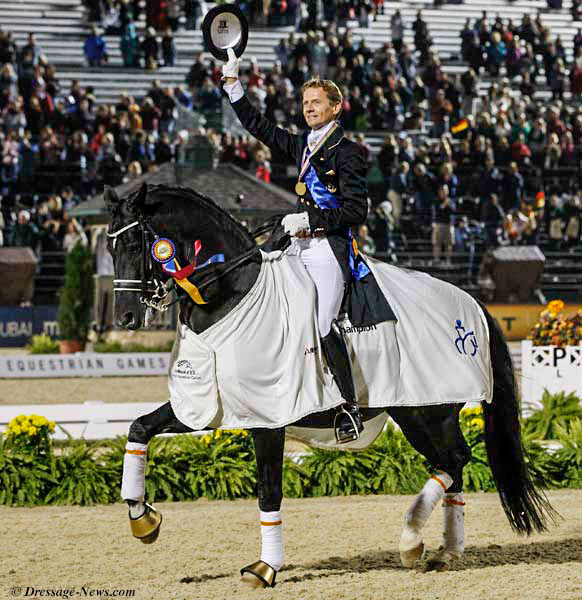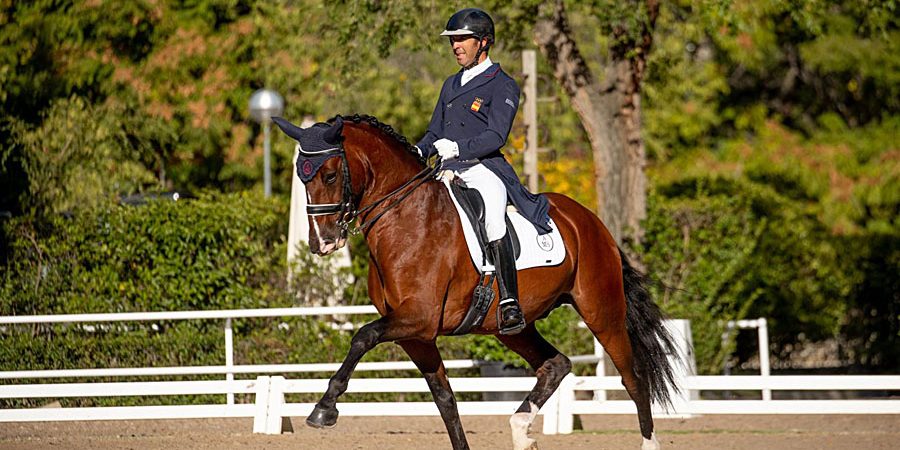What’s Building at Tryon to Prepare for the Big Show–the World Equestrian Games – Part 2 of 3
8 years ago StraightArrow Comments Off on What’s Building at Tryon to Prepare for the Big Show–the World Equestrian Games – Part 2 of 3

May 10, 2018
By KENNETH J. BRADDICK
About 700 horses expected to be flown from around the globe to join another 300 already in the United State for the World Equestrian Games in four months time will be the largest airlift of show horses in history.
The estimated 550 horses from Europe will be flown in an armada of 11 flights to the Greenville-Spartanburg airport where the horses will be given a police escort for the 45-mile trip to Tryon International Equestrian Center that will host the Games in North Carolina Sept. 11-23.
The horses will be quarantined in stables at the WEG show grounds under arrangements made with the U.S. Department of Agriculture by Tim Dutta whose Dutta Corp. has partnered with Peden Bloodstock, the European equine transportation company, as he did in 2010 for the World Games in Kentucky.
Another 120 horses from Latin America are scheduled to be flown into Miami and some others come from the Asia/Pacific region.
All told, up to 1,000 horses will be at Tryon for the world championships held once every four years of dressage, driving, endurance, eventing, jumping, reining, vaulting and para-dressage. About half will be stabled at the show grounds on each of the two weeks of the Games.

Debbie McDonald, who made history for the United States on the silver medal WEG team in 2002, the highest placing for the U.S., as well as the first American to win the World Cup, and team bronze in 2004, one of her two Olympics, will likely be in Tryon as she is the coach of Laura Graves on Verdades, Adrienne Lyle on Silvano, Kasey Perry-Glass on Dublet and Olivia LaGoy-Weltz on Lonoir. She visited the venue during the recent CDI3*.
“This is my first time to North Carolina so really had no idea what to expect being from the West Coast,” she told dressage-news.com. “I had heard the Tryon Horse Park was very special. When we drove in even with the construction I was thoroughly impressed. So much thought has gone into the comfort for the horses and human. I have no doubt that this will be one of the world’s most amazing venues when completed. And, hopefully, a spot for many WEG to come!”
The Dutta Corp. and Peden Bloodstock handled a total of 787 horses for Lexington in 2010–450 from Europe, 50 from Latin America and 20 from the Asia/Pacific region.
The logistics are complicated, requiring global coordination.
Horses–many worth millions of dollars/euros–being picked up from dozens of locations throughout Europe to go to airports where they go through the same passport scrutiny as humans but with the additional requirement of a health certificate. Checked baggage typically means a very large wheeled trunk filled with saddles, tack, saddle pads, grooming kits and often hay, feed and even water so they don’t have to change diet and suffer the North Carolina equivalent of “Montezuma’s Revenge” that humans occasionally experience while traveling.
The trans-Atlantic flights for the European horses are an everyday occurrence that Dutta Corp. organizes for several thousand horses every year for the Florida dressage and jumper circuits, for special events, international competitions and horses going to new homes.

The first WEG flight will arrive Sept. 2, though some horses that came for one of the series of test events have stayed.
When the horses arrive from Europe, they go into mandatory quarantine for three days, while those from Latin America will go through Miami for quarantine then to Wellington, Florida to continue training before going on to Tryon by road. Horses from Asia will transit through Chicago for quarantine before heading to Tryon.
Eric Straus, who oversees the WEG technical operations, said that in addition to the health quarantine for all horses, pyroplasmic-affected horses will be in a separate barn and follow special protocols required for them to compete.
There are way more stalls than required, 1,500 permanent stables, each one measuring 10 x 12 feet (3 x 4m) with rubber mats, water hoses within easy reach, fans and plenty of wash stalls.
Horses for each discipline will be stabled where they will compete and there is plenty of room to exercise the horses, at least 12 ridable rings.
Elizabeth B. Juliano, who supports at least two prospective U.S. team combinations, said of the TIEC: “I’d heard great things about this venue, which sometimes sets you up for disappointment. But, in this case the venue surpassed expectations and it isn’t yet finished! Some of the problems we encounter with venues for championships are not even there. For instance, the most important aspects: good stalls and good footing, are a non-issue because they are so good. I think everyone will enjoy this world class place. I can’t wait.”

The 500,000 spectators that the organizers estimate will visit WEG over two weeks will make the championships almost as large as the 2006 Games in Aachen, Germany which is considered the most successful so far of the combined championships staged once every four years since 1990.
The inaugural event in Stockholm was highly praised but as reining and para-dressage were not yet among the family of international horses sports was not the same size or complexity. The following Games in The Hague were organizationally catastrophic. Rome in 1998 found itself in the same position as Tryon today, taking over at the last minute from a failed Dublin effort but restricting competition to five disciplines. The 2002 championships in Jerez, Spain was well organized but taxpayers there were still paying the bills years later for an event spread over three venues.
Aachen, Germany in 2006 set the standard, building on 108 years of staging perhaps the globe’s most successful horse show that evolved into the annual World Equestrian Festival CHIO of dressage, jumping, eventing, driving and vaulting, attracting the cream of horse sports. Top sport, top organization, unprecedented number of participants and well over 500,000 spectators. Dressage was center stage–in the main arena with jumping and 40,000 spectators. But no para-dressage.

Lexington, Kentucky in 2010 was the first WEG outside Europe, and para-dressage was included for the first time. The Games were remembered for the final appearance of Totilas ridden by Edward Gal that overshadowed many negative aspects that ran from poor management to ripoff hotel rates, and a charge of $2 for a start list.

The 2014 WEG in Normandy again presented top sport. Few spectators, media, riders shared the same good feelings about the organization that designed both the individual competitions as well as the different venues so far apart and frequently hard to get to. The main stadium for dressage and jumping was in a soccer stadium. Food for all but VIP had to be found elsewhere. During the two days of dressage Grand Prix, security forced spectators including many elderly to make their way down steep stairways as they were not allowed to stay in their seats even when the same location was reserved for the two daily sessions. Outside the show grounds, residents were friendly and helpful.


